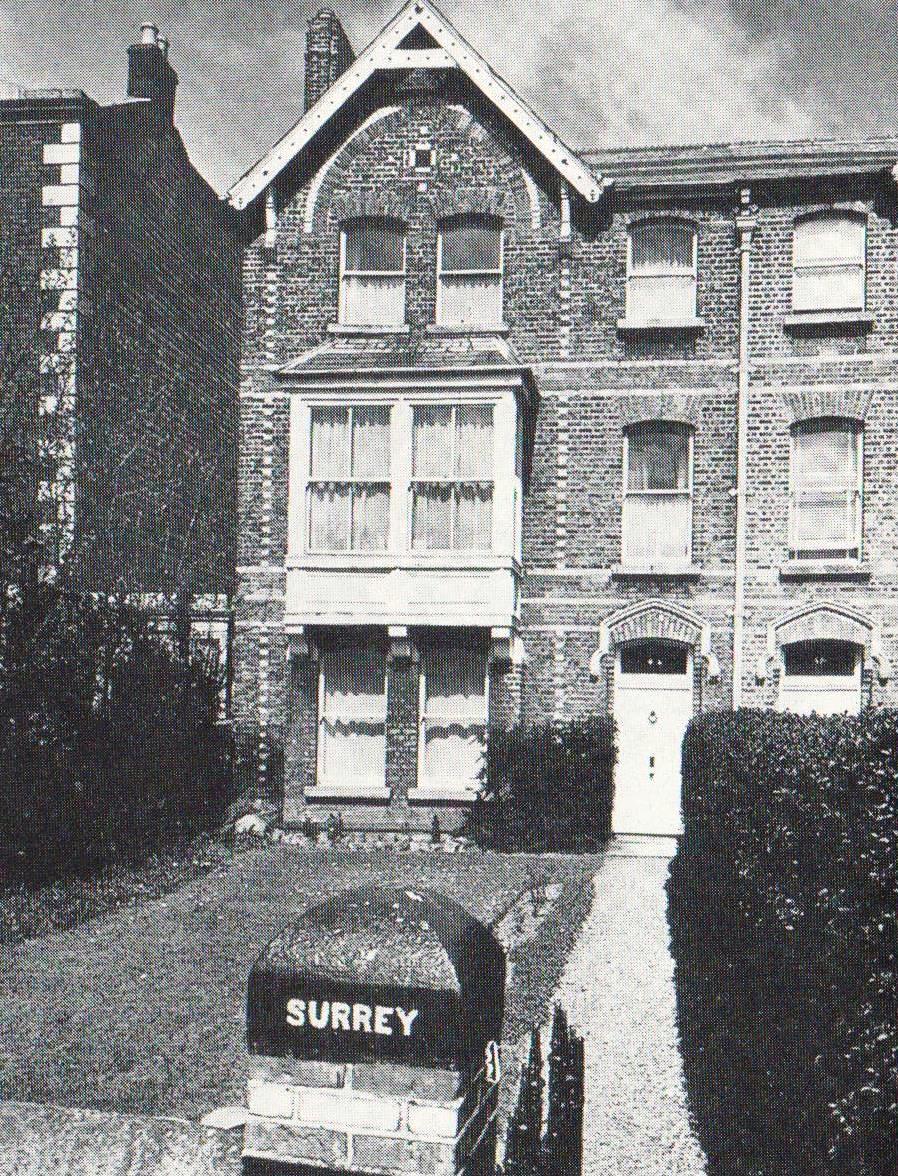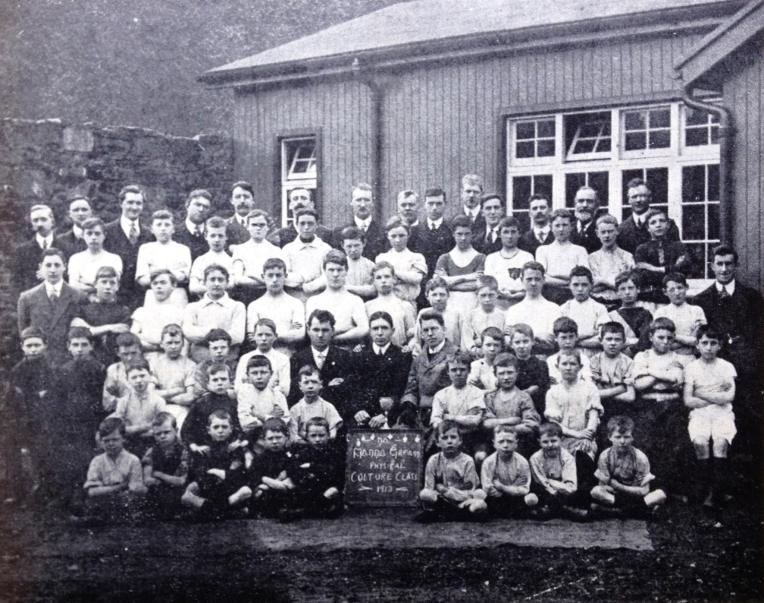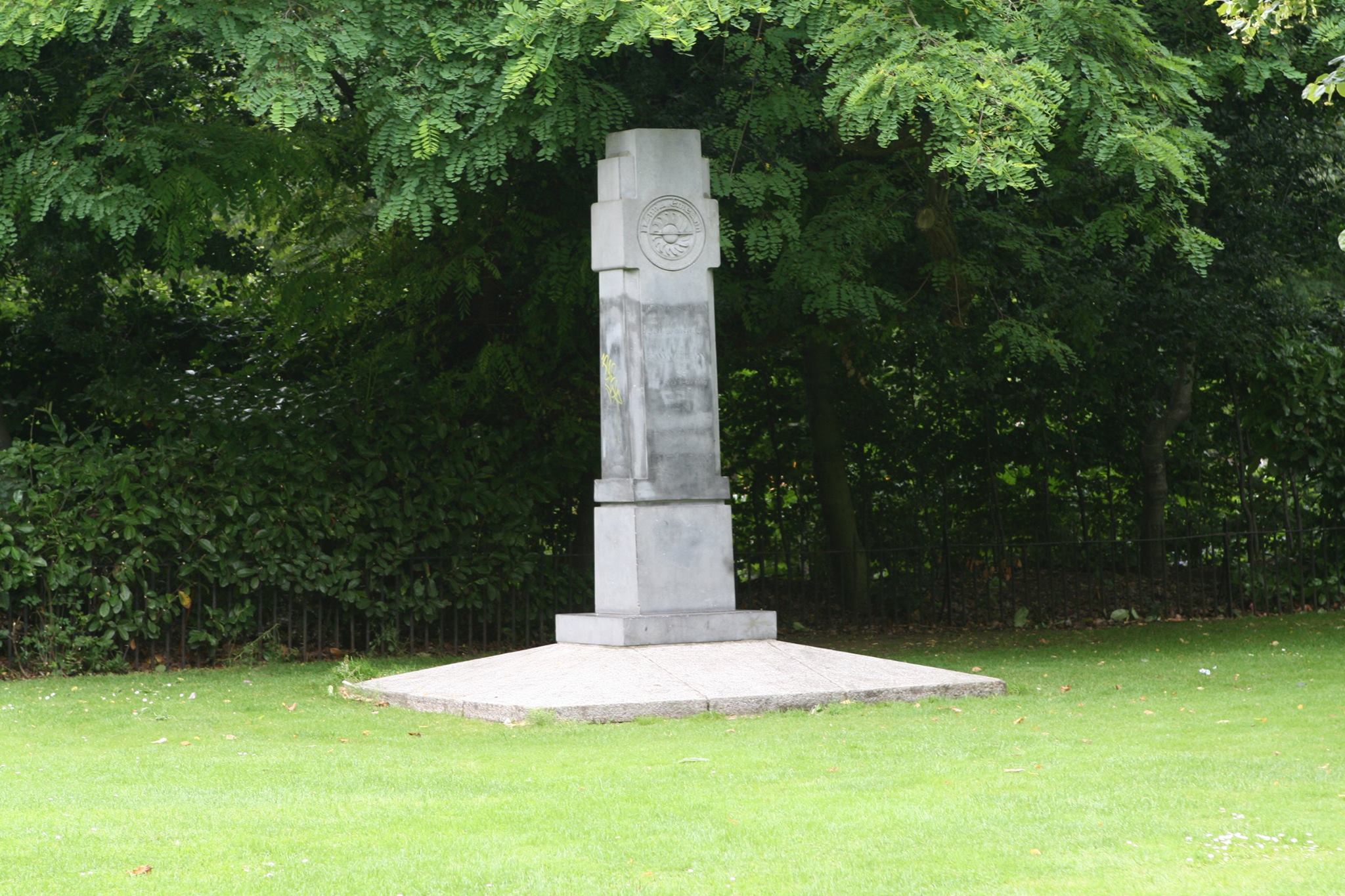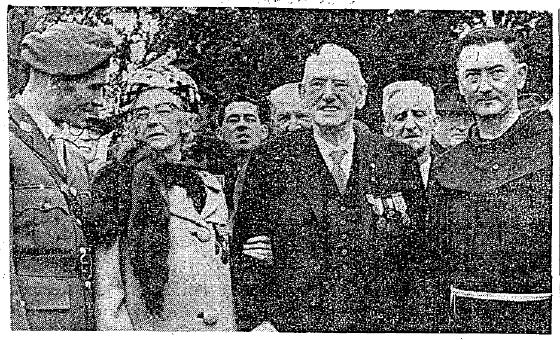
‘Surrey House’, Leinster Road, Rathmines.
By Eamon Murphy
This photo is of ‘Surrey House’, on Leinster Road in Rathmines, which was once the home of Countess Markievicz. Countess Markievicz and her husband Caismir moved here in October 1911, following her ill-fated commune ‘experiment’ at Belcamp House in Raheny. The house is a semi-detached building situated at the corner of Leinster Road and Grosvenor Lane. Anne Marreco described it as a “tall, gabled, narrow villa, joined to its twin which stands on the corner of a road leading to Grosvenor Square, built of red brick and with a strip of garden leading to the broad stretch of Leinster Road”.
It was at ‘Surrey House’ that the Countess built up a small ‘clique’ around her that consisted of her most loyal boys in the Fianna. Some of these had even taken to ‘moving in’. They took over part of the house and used it as a regular meeting place. Some of the older Fianna officers, particularly the IRB members, advised her not to encourage this new elite group and said it would bring unwanted attention to the organisation. However this did not deter the Countess and she used ‘Surrey House’ as a 2nd home for her close Fianna circle. Some of this ‘Surrey Clique’, as it came to be known, included Harry Walpole, Jack Shallow, Louis Marie, Ed ‘Eamon’ Murray, Andy Dunne and Patsy O’Connor.
*Patsy sadly passed away in 1915, eighteen months after receiving an injury during the great lockout of 1913. He never fully recovered from the baton-inflicted wound and he finally succumbed to his injury in June of 1915. Patsy had been a prominent member of the Fianna and was once the editor of the short-lived ‘Fianna’ magazine.
‘Surrey House’ became a hive of activity and visitors included well known republicans, labour activists, journalists, artists, and others from Markievicz’ social circle. A visiting French journalist once remarked that ‘Surrey House’ was “more of an army HQ than a home”. It was also carefully watched by G-men from Dublin castle which led to another visitor claiming that it was the best-guarded house in Dublin, with “detectives on the outside and Fianna boys on the inside”.
The presence of detectives was likely due to the unusual activities taking place, not to mention the caliber of guests visiting. On one occasion in 1914, one of the Howth rifles was tested in the back garden. Unfortunately this incident attracted the attention of the well-to-do neighbours. Rathmines at that time was a majority unionist middle class neighbourhood and they didn’t take too kindly to these undesirables intruding on their locality. Sean Prendergast recalled ‘Surrey House’ and its inhabitants “being looked on with condemnation and disgust by the law-abiding and respectable neighbours”. He remembers that they particularly didn’t like the nationalist songs coming out of the house, which “disturbed the peace and quietude of RAWTHMINES. By the same token, songs were written and sung (by us) in honour of the same RAWTHMINES, immortalizing it as a district of Britons, Shoeens and Castle-hacks”.
Another activity, which regularly took place at ‘Surrey House’, was the printing of seditious and nationalist material. Markievicz got hold of a small hand held printing press and anti-British posters and handbills were printed and distributed by the Fianna. These were mostly of an anti-enlistment nature but others included pro-Fianna Eireann posters, one of which was “Be True To Ireland And Do Not Join The Baden-Powell Scouts”.
‘Surrey House’ was where James Connolly had stayed and recuperated after his imprisonment and hunger strike in 1913. Connolly, and his family, ended up staying at Surrey House on and off for the next three years. It was also the location of the first meeting between Connolly and Liam Mellows. Connolly later said of his encounter with Liam that he was the “finest of all the young republicans” and remarked to his daughter Nora that “I have found a real man”.
Connolly and Markievicz used ‘Surrey House’ as a base and office for the printing and editing of ‘The Worker’s Republic’ and ‘The Spark’.
Others to visit the house during the period included John Devoy, Jim Larkin, Helena Moloney, Eamon Martin, Con Colbert, Jack White, Bulmer Hobson, Margaret Skinnider and Hanna Sheehy-Skeffington.
‘Surrey House’ was also known as a place of refuge for the young and poor. Many young Fianna boys who had taken ill, were brought to recover at Markievicz’ Rathmines home. It was also said that she took in young girls who had lost their jobs in the Jacobs factory in 1913.
Often the gas supply was cut off due to unpaid bills, and Markievicz also struggled to feed her many visitors but it was still a place of warm hospitality where one could feel welcome and get a bite to eat, even if it was just bread and butter.
The Republic flag flown at the GPO in 1916 was apparently made in ‘Surrey House’, however according to a different account it was only stored there for the week prior to the Rising.
The house was raided several times prior to 1916 and was then totally ransacked by the military in the days after the Easter Rising. They had trashed the interior, including the antique furniture, paintings, sculptures and ornaments. The British soldiers also destroyed the well-stocked library. They then dug up the garden looking for guns. Whatever was left, that was salvageable, was subsequently looted.
There are not many references to ‘Surrey House’ in the years following the Easter Rising, in fact according to Diane Norman, Markievicz never had a proper home again after the destructive raids in 1916. However a witness statement from Moira Kennedy O’Byrne claims that Michael Collins warned Countess Markievicz of an impending raid on ‘Surrey House’ during the ‘Tan War’. If true then Markievicz most likely remained as a resident at her Rathmines address for the duration of the War of Independence despite being imprisoned for a good deal of that period.








